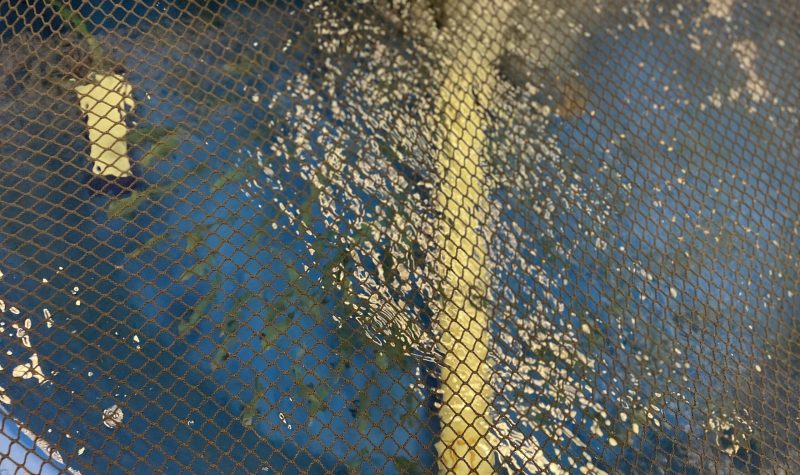Atlantic Canada’s most critically endangered species, the Atlantic whitefish, is only found here in Nova Scotia. To protect them from extinction in 2018, Dalhousie University's aquatic research facility Aquatron Labrotary looked after the 25 fish. The lab is the only place with the last and only captive population of Atlantic whitefish which have grown, spawned and are now thousands in numbers.
The Aquatron lab is releasing them back into the wild over the next couple of weeks.
Dr. Paul Bentzen, a biology professor at Dalhousie University, has been involved with Atlantic whitefish research for about a decade. In 2018, he learned that the Department of Fisheries and Oceans (DFO) might be returning 25 captive fish back to the wild and was concerned that they may not survive. So he sought permission from the Department of Fisheries to move those fish here to the Aquatron.
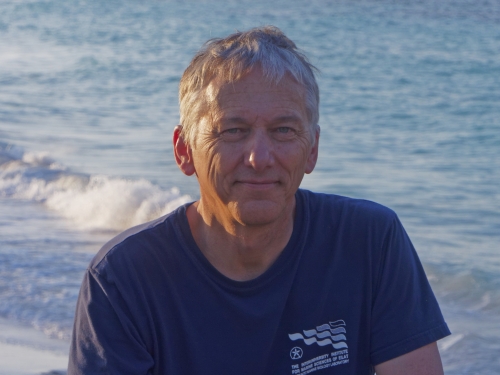
Dr. Paul Bentzen is a biology professor at Dalhousie University and has been involved with Atlantic whitefish research for about a decade. Photo contributed.
Bentzen said he has been interested in this species for many years.
"The recent phase that led to the captive breeding happened almost by accident in 2018. In the fall, it turned out that DFO had some baby Atlantic whitefish that they had captured in their remaining habitat, and it had just come out by accident that they were going to dump those now healthy fish."
The DFO was going to put them back in a lake that was overrun by invasive predatory fish. Bentzen thought the best solution was to move these fish to the Aquatron so they may grow safely and later spawn.
“Those fish grew up and made a lot of eggs this winter, which have turned into baby fish, some of which are being released back into the wild habitat right now.”
The breeding plan for the future is to have a captive stalk of breeding fish at the Aquatron that will produce thousands of juvenile white fish.
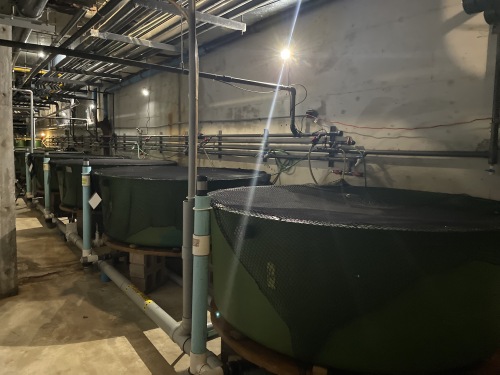
Depending on the research happening at Aquatron, the facility has hosted between 100 fish to 350,000 fish in their water tanks. Photo by Sara Gouda.
“That can be used either to support the original remaining population or to introduce them to new locations to try and to make the species more secure. So it was all very serendipitous how it started, but it's grown into a real thing.”
The reasons this species is endangered is due to a litany of threats, from having predatory fish in their environment, dams without safe passage for them to migrate between fresh and saltwater, and a high acidic water area from the acidic rain, explained Bentzen.
“The surviving population has been trapped behind dams for about a century.”
The fish native to the area are able to survive only in lakes in the Petite Riviere watershed near Bridgewater, NS, the head lake also serves as the main drinking water source for the town of Bridgewater.
Dalhousie University Aquatron Manager John Batt said the aquarium is referred to as Noah’s Ark because of its fish conservation program.
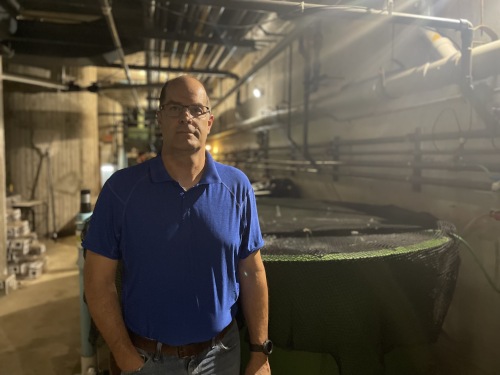
Aquatron Manager John Batt is seen standing next to the tanks where the Atlantic whitefish are being cared for. Photo by Sara Gouda.
“Things started to develop further so we get some support from the Department of Fisheries and Oceans (DFO). They have a few pieces of equipment to help support the fish. Then we got a short-term holding contract from them just to keep to support us keeping them. Later, we developed the idea to start spawning them.”
Most aquatic animals reproduce through the process of spawning.
Two years ago, Dalhousie’s support from DFO started to include the idea of spawning fish, and this year they have successfully done that. The reason the Atlantic whitefish are an endangered species is not fully known by scientists.
“By the time modern science sort of rediscovered Atlantic whitefish, they were already on the decline. Originally, there were two populations, one in the Tuscan and its river area and one in the petite River area,” said Batt.
However somewhere around the last three decades, the Tuscan whitefish population became extinct, leaving the final fish population at Dalhousie University labs.
The Atlantic whitefish are an anadromous fish species, meaning they are born in freshwater, spend most of their lives in saltwater, and return to freshwater for spawning. Batt said their migration out to the ocean comes with its set of pressures and challenges.
“Migrating back can be a problem for them if there are dams and other obstacles in the way. Also, there are now chain pickerel and smallmouth bass fish, they are predatory species and would out-compete a very small population of Atlantic whitefish so lots of different pressures on them over time.”
The Atlantic whitefish belong to the salmon family and is a much older species of whitefish than many other whitefish species that live around the world.
In terms of identifying Atlantic whitefish, Batt said they look a little similar to salmon.
“They’re narrow, there's silver throughout their bodies. Their backs are quite beautiful with a green coloration on the edges of their scales, and some black lines. So you get this beautiful black and green checkerboard pattern down their backs. They also have big tail fins that have a bit of black coloration in them as well, they're really a beautiful fish.”
The Aquatron is the largest university-owned facility in Canada. In addition to working with Dalhousie departments whether it being the faculty of science, medicine or engineering, they also work with many external organizations as well.
“So we're working with Parks Canada, Cape Breton Highlands National Park, we bring small, tiny, tiny little three, four inch salmon here. And then we rear those until they're mature and ready to spawn. And then we take them back to the park and release them with Parks Canada.”
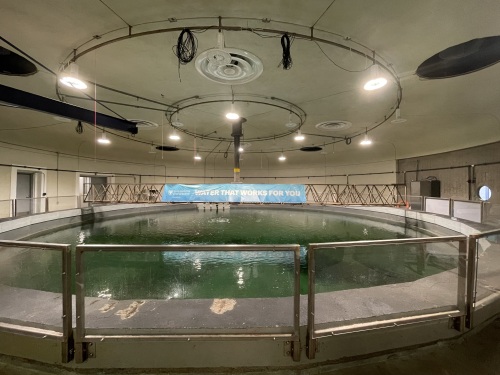
The Aquatron laboratory has a 700,000 litre tank, three 300,000 litre tanks, a 34-feet deep tower tank, and 17 Different wet labs. The huge ranged facility can adjust it’s water temperature condition, and work with freshwater and saltwater aquatic animals. Photo by Sara Gouda.
The Aquatron laboratory has a 700,000 litre tank, three 300,000 litre tanks, a 34-feet deep tower tank, and 17 Different wet labs. The huge ranged facility can adjust its water temperature condition, and work with freshwater and saltwater aquatic animals.
Depending on the research happening at Aquatron, the facility has hosted from between 100 fish to 350,000 fish in their water tanks.
“Some of the Atlantic whitefish are being released right now to the head lake system. And some will be released in the coming weeks to the Petite Riviere. It's the biggest release in 10 years of Atlantic white fish back to nature.”
Eric Reich is a Dalhousie University student and is doing his co-op training at Dalhousie’s Aquatron and has been here during the Atlantic whitefish hatching period.
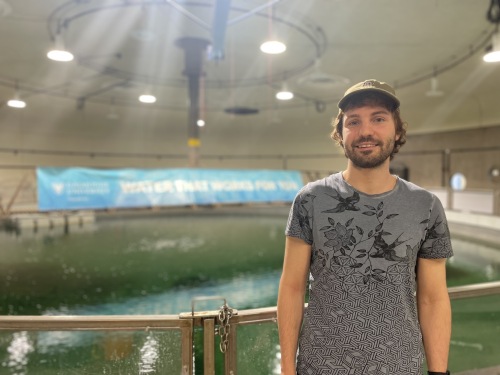
Eric Reich is a Dalhousie University student who has been working with the Atlantic whitefish since Dec., from when they were just eggs until now. Photo by Sara Gouda.
“I’ve been working here for about a year now I started in August. I’ve been working with the Atlantic whitefish since December, from when they were just eggs until now.”
Reich’s everyday tasks include cleaning tanks, making sure the fish are all fed, and checking oxygen level tanks.
Michael Martino is an animal care technician; he graduated from Dalhousie University with a degree in Marine Biology.
“It’s a lot of cleaning, feeding, and looking at the basics of how to keep fish alive in tanks. It’s your waterflow, temperature, oxygen, that’s the formula for life, for fish at least.”
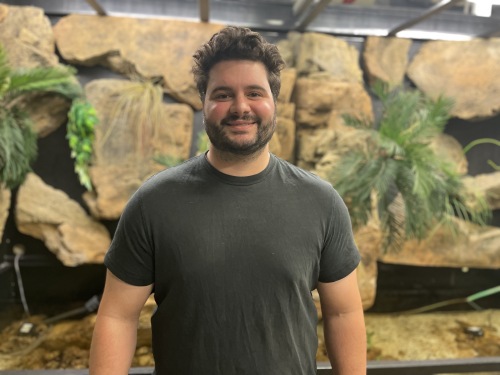
Michael Martino, animal care technician said the formula to keep fish alive in tanks is to check the water flow, temperature,
and oxygen levels. Photo by Sara Gouda.
Martino encourages students to check out the Aquatron laboratory and facilities, to learn more about all the aquamarine animals and research taking place.
Listen to the full interview below:


